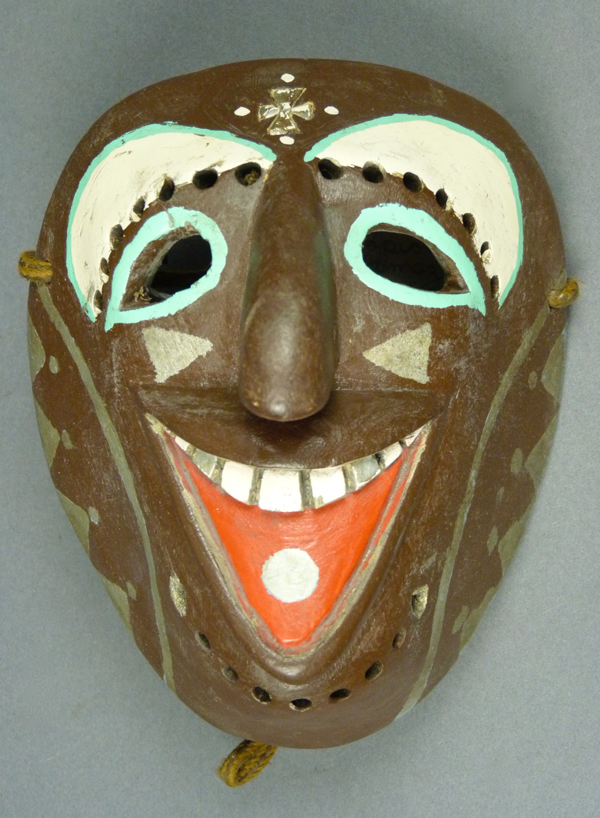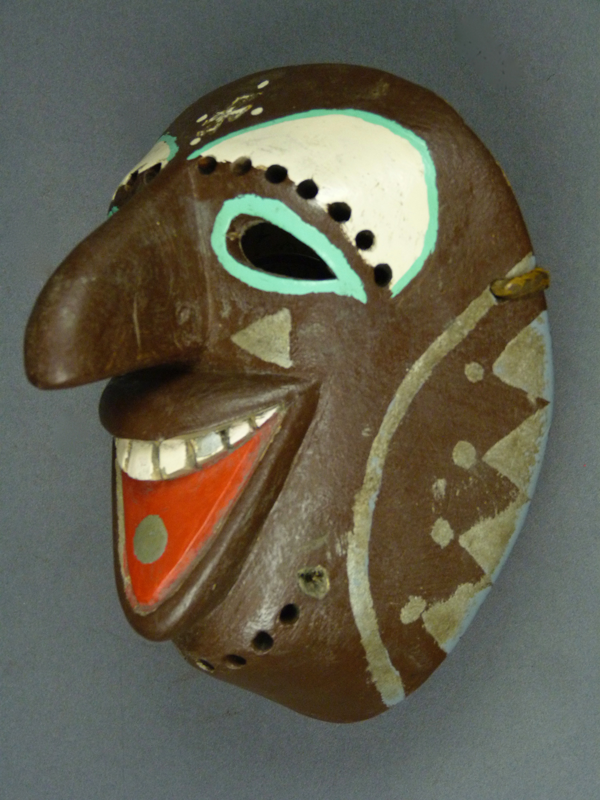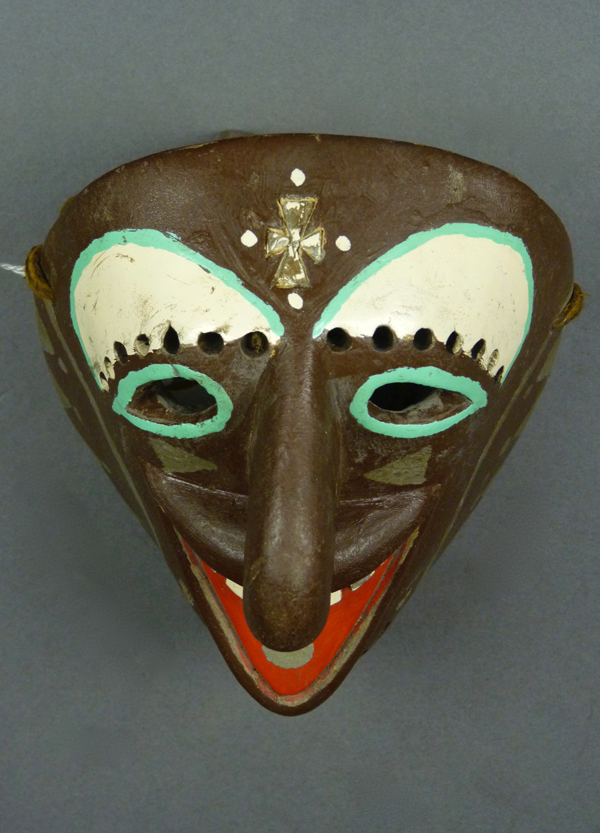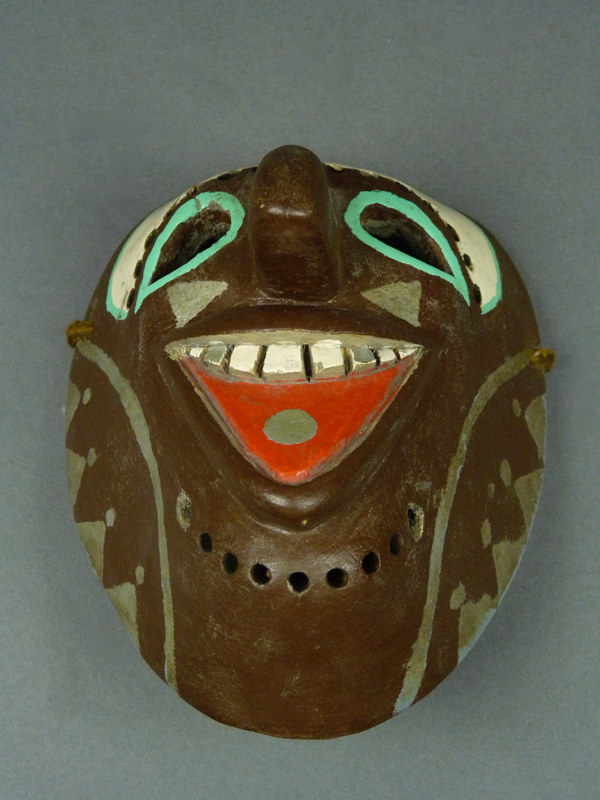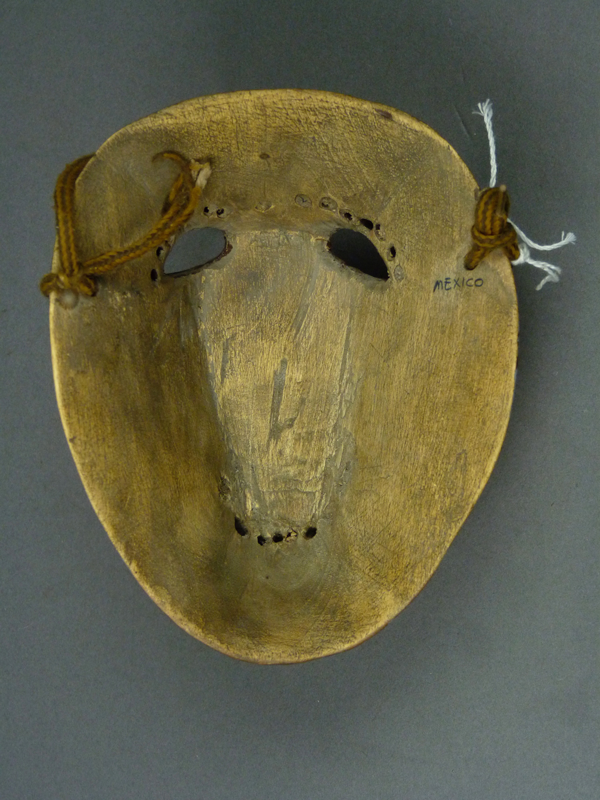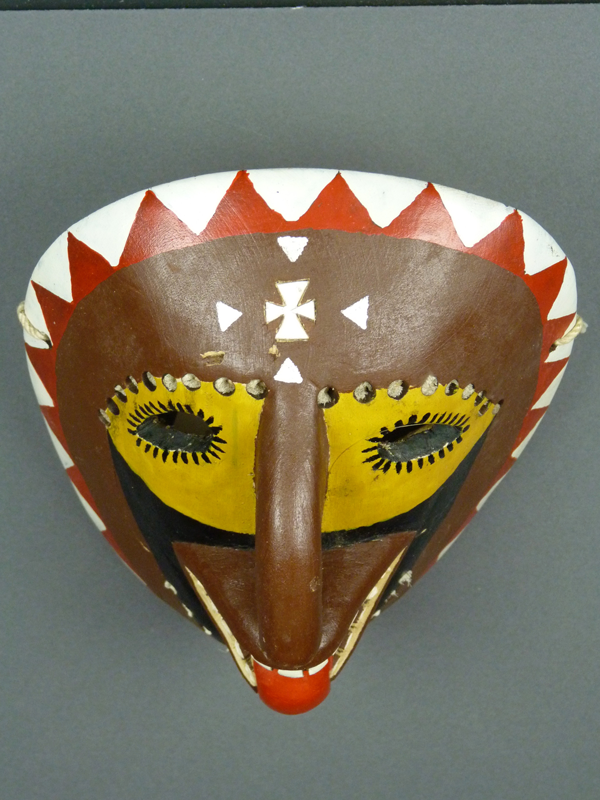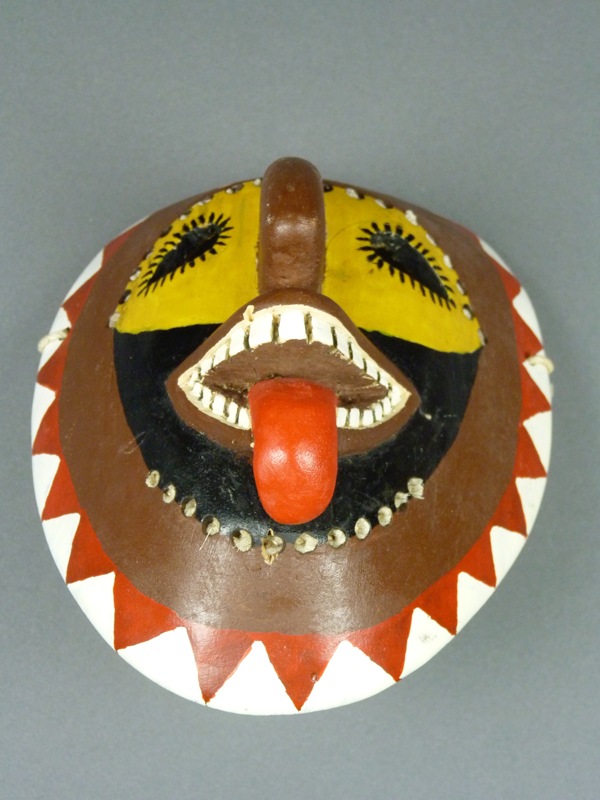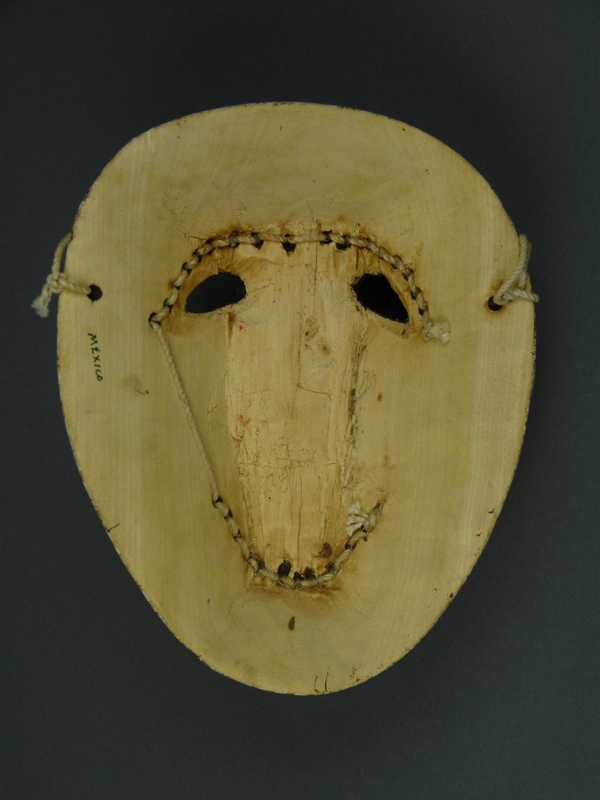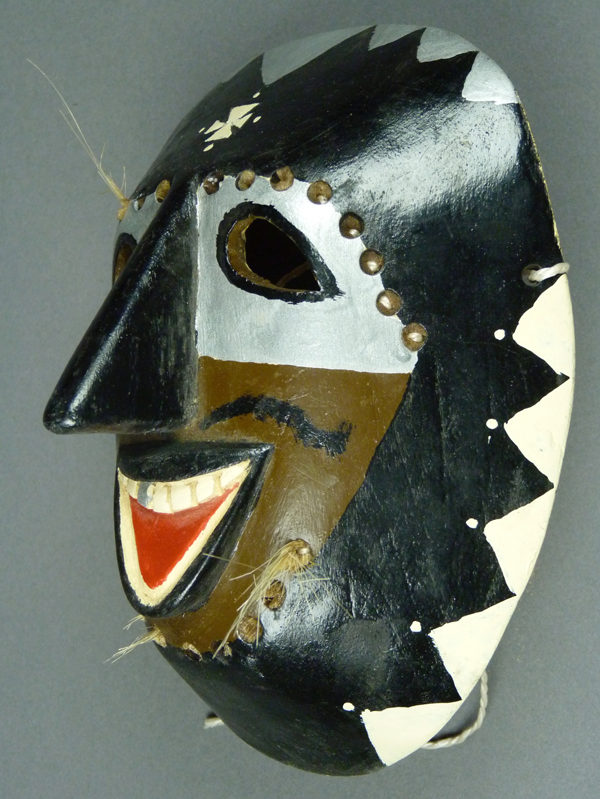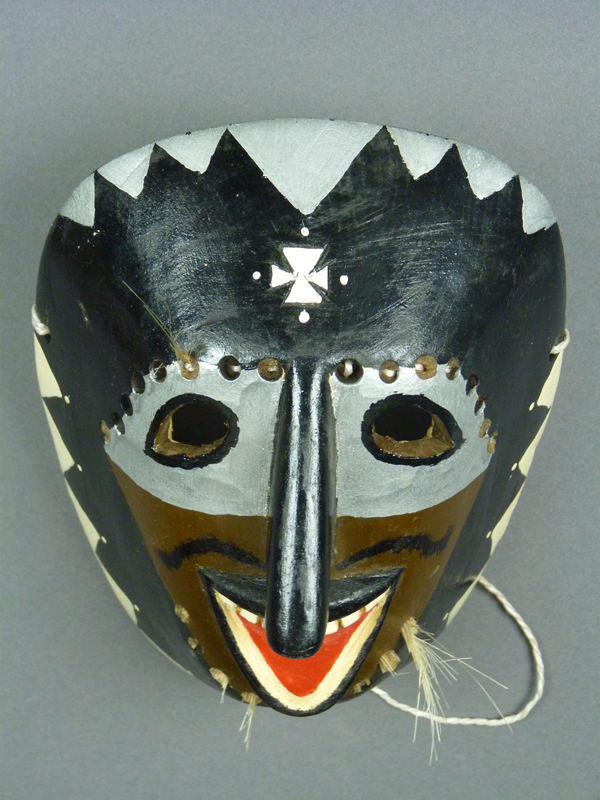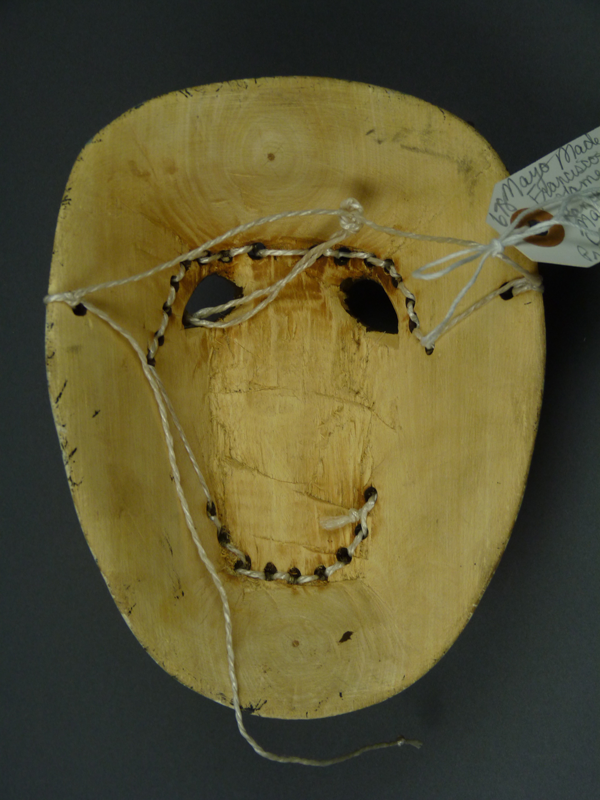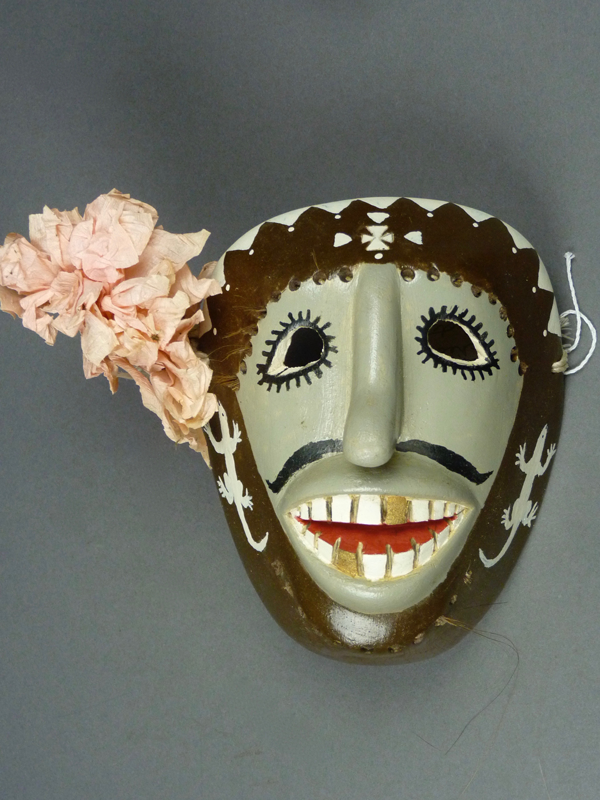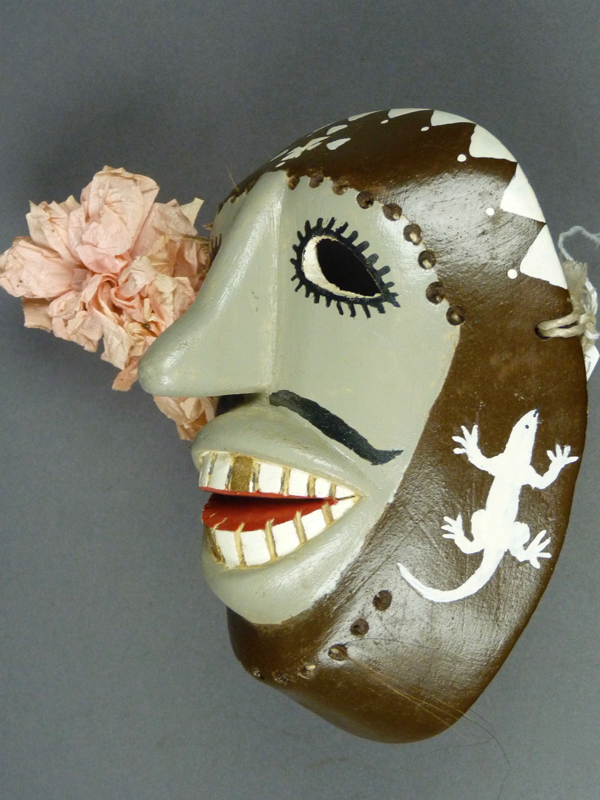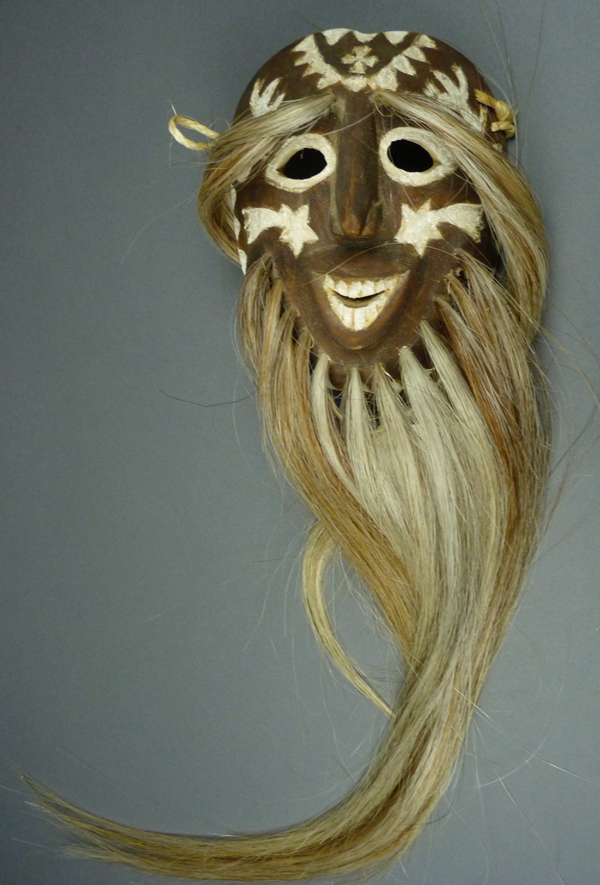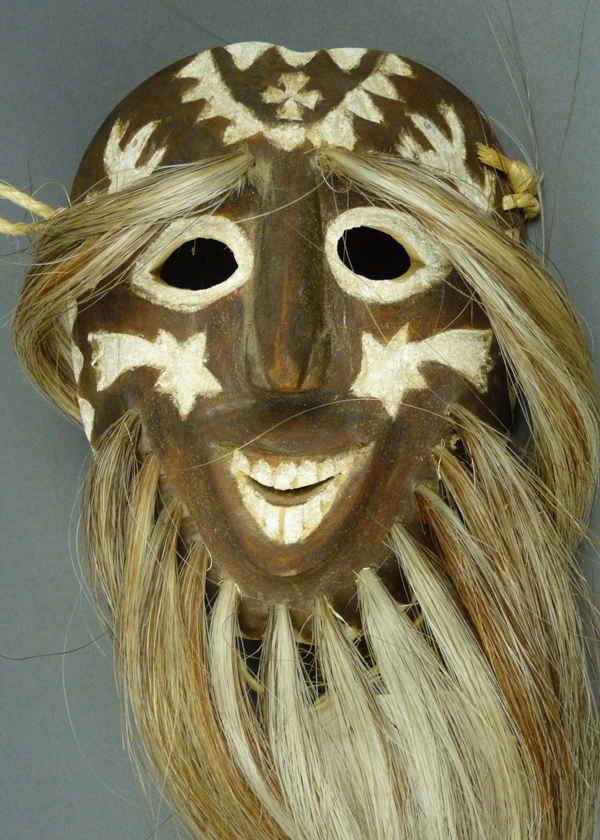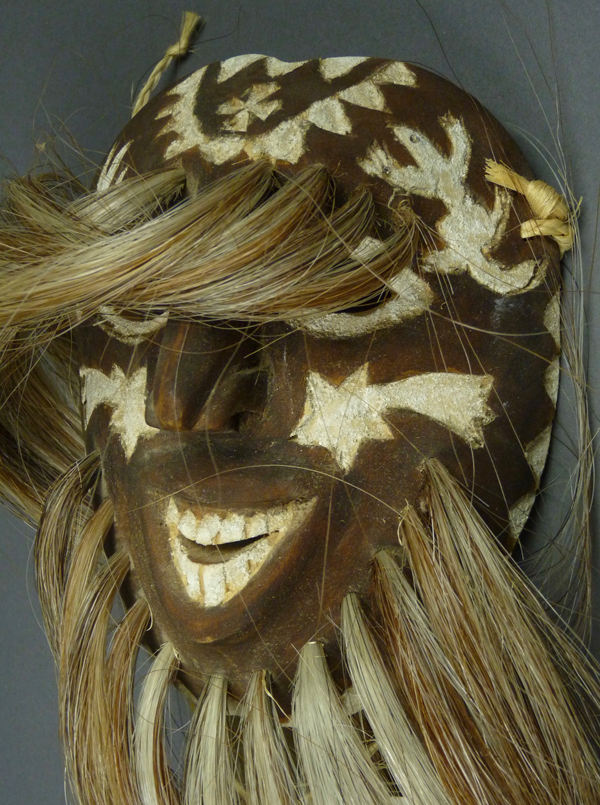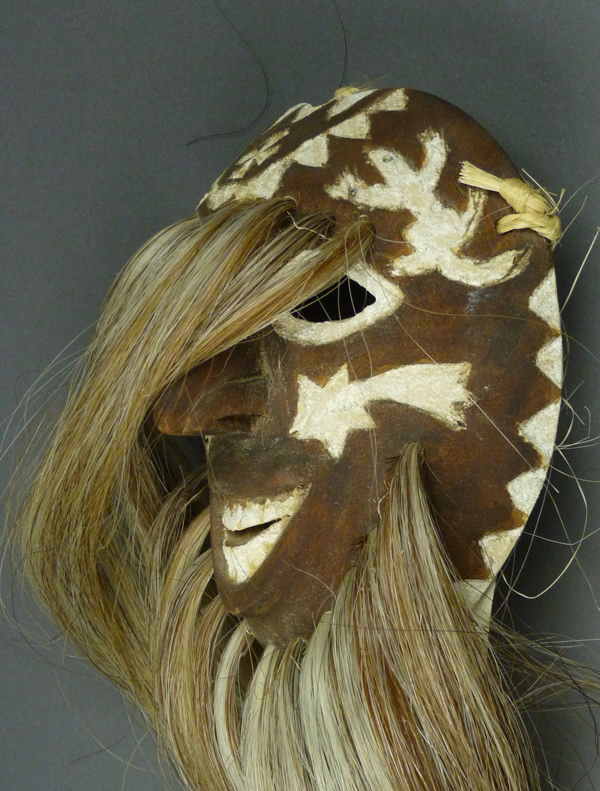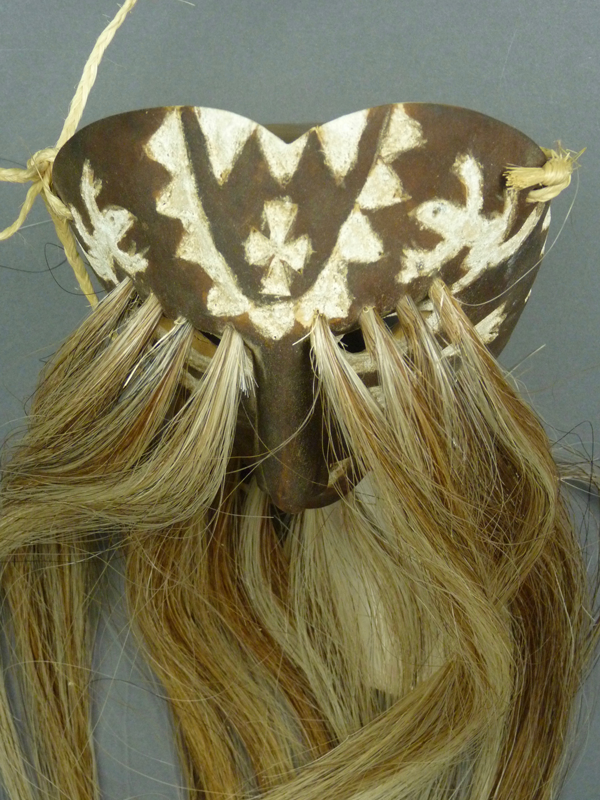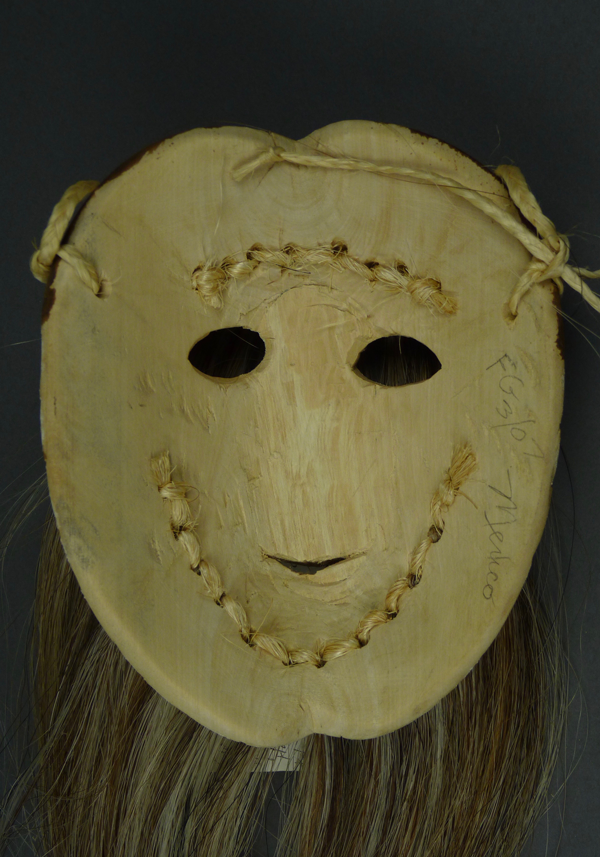This week we will examine five more masks from the collection of Barney Burns and Mahina Drees Burns that were carved by Héctor Francisco “Paco” Gámez, or perhaps by his father, Serapio Gámez. Of these, the first is traditional in design, and has been heavily danced, the three that follow are experimental in their use of colors and were mildly danced, and the fifth is a copy of a much older mask. Only the last of the five still has its hair; insects ate the hair on the other four.
I really like the first of these, because it has such a jolly appearance. It was made in 1984, heavily danced, and collected in the late 1980s by Roberto Ruiz.
The rim design of dotted triangles is familiar to us by now.
Likewise we are not surprised to see a recessed forehead cross, but this one has inlaid triangles of mirror glass.
There is a rim design, but is in not continuous.
There is, of course, no chin cross.
The back is stained from long use.
The second mask came with little information. It would seem traditional in appearance if not for the bright yellow paint.
The lips, mouth, and tongue are very well carved, and consistent with Francisco’s style
There is a very traditional rim design. We find inlaid rhinestones over the eyes.
The forehead cross was painted freehand, without any inscribed outline.
Again, we see only the mildest staining from use.
The third mask is a variation on the first two. and also comes with no data.
This is yet another mask that would seem entirely traditional except for one of the paint colors.
The forehead cross and the rim design hold no surprises.
The carving of these masks is so consistent.
There is very mild staining from use.
The fourth was collected in December, 1986.
Francisco carved this nose in a different shape than usual.
We saw a similar lizard on the cheek of one of masks in last week’s post.
We see mild staining from use, particularly on the back of the forehead.
The last mask in today’s post does look much different from the others, and it has a more interesting history. Francisco copied the design from a mask made in about 1940, and he won a prize for using only natural materials for the pigments. This mask was collected in March, 2007. The date of carving is undocumented.
This shooting star motif is actually seen on Mayo Pascola masks from the Mexican state of Sinaloa, and not usually used by Rio Mayo carvers, while the lizards are more typical of Yoeme (Yaqui) Pascola masks.
The decoration around the forehead cross can be seen on Yaqui and Rio Mayo masks.
This is a splendid mask.
The top of this mask has an unusual scalloped edge.
The bottom edge is scalloped in the same manner as the top. I don’t think that this mask was ever danced.
Next week we will look at a few more masks by Francisco Gámez from my collection.
Bryan Stevens

